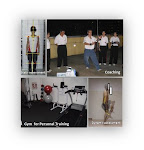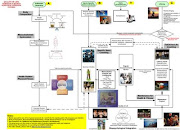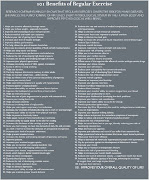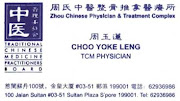.jpg)
The ankle and wrist weights are extremely useful for increasing the intensity of the training (improve the effectiveness of cardiorespiratory fitness, the heart rate monitor can be used to assess the exercise intensity) and strengthen the myofascial lines (kinetic chain) and function or locomotor slings (function for Activities of Daily Living, ADL), refer to January 2009 article for the lines which create "stretching on the lines" and "opposing of the lines" in Tai Chi. If there are any restriction in the lines, there will be musculoskeletal dysfunction, that is the reason why the therapist doing massage, manipulation or acupuncture helping to release the musculoskeletal pain of the specific restricted line.
The practioners that having over-pronation (foot collapses inward toward the midline of the body) need to correct and understand how to get their feet and ankles into neutral position for all standing poses. On dynamic movement, by changing the body weight from one leg to another or changing poses that demand the body to balance on one leg (either in Tai Chi movement or walking/running gait) need to caution that the foot and ankle complex are stronger. When transfer of the body weight onto the foot, the big toe need to push down eccentrically (windlass mechanism) and act as a braking mechanism, giving the arch of the foot more stability and preventing the foot and ankle from collapsing incorrectly. Other areas to note are the pelvic anterior tilt and excessive thoracic kyphosis. These are some of the reasons why peoples exercise walking, running, other sports and even in Tai Chi faced issues like ankles, knees, lower back pain etc.
One point to take note when using the ankle weight, practioners must able to control well the above motor movements.
The TRX and Mat work are very good for conditioning and many of the myofascial line restrictions can be surfaced and corrected here. The short stick and medicine ball are used for physical preparation to maximize positive skills transfer into Tai Chi movements.
Flat shoes like court shoes are highly recommended and preferably with orthotics for flat floot. The orthotics will help to raise the collapsing foot and has ability to assist the foot to neutral position.
.jpg)
























No comments:
Post a Comment